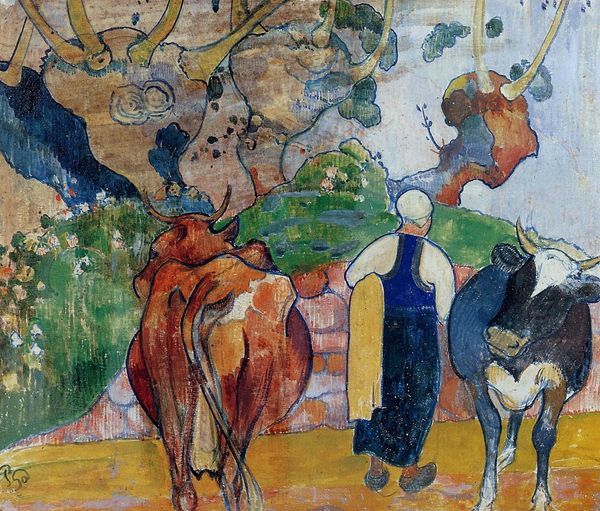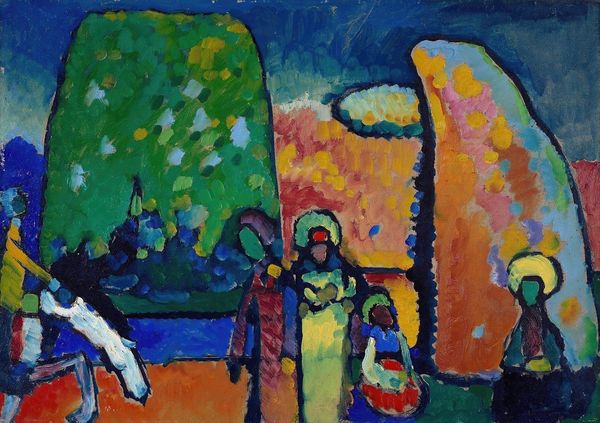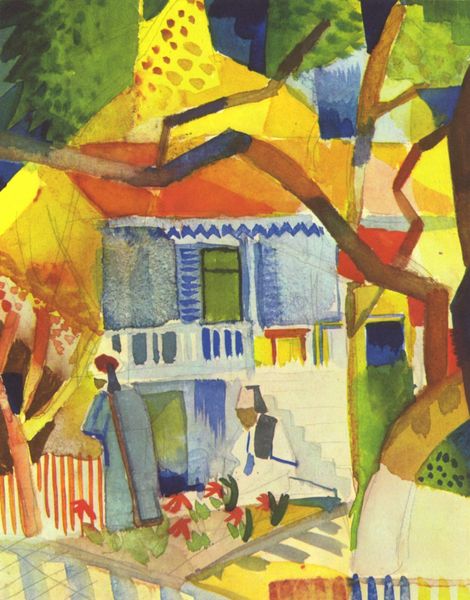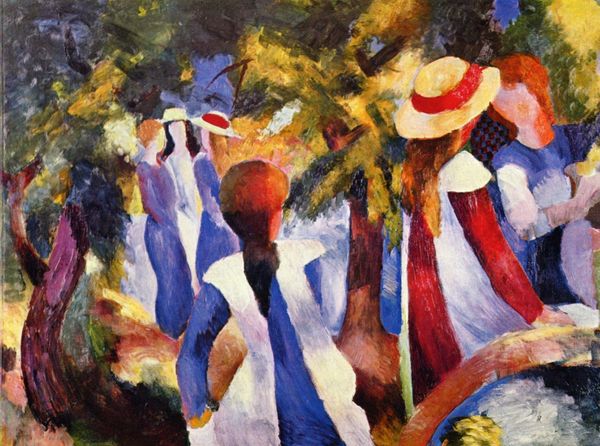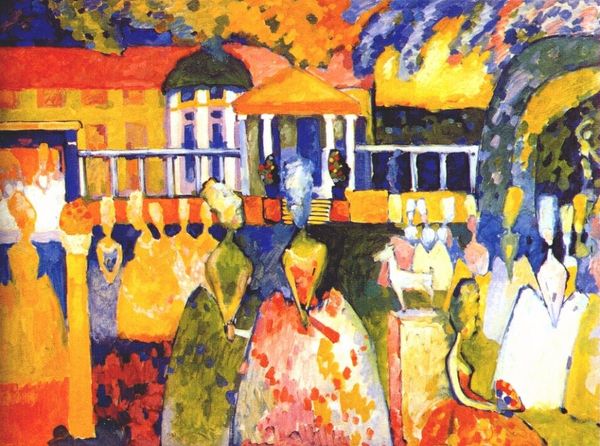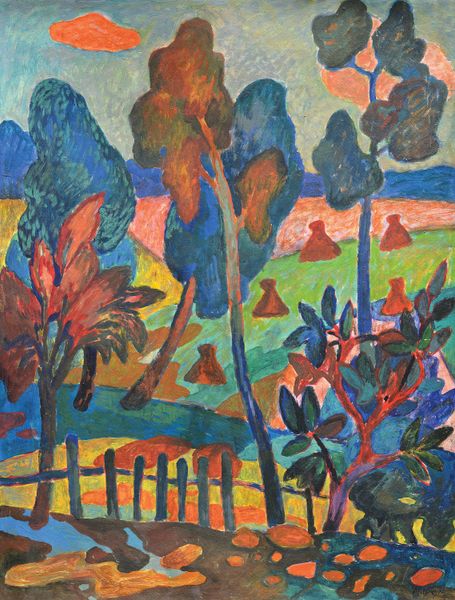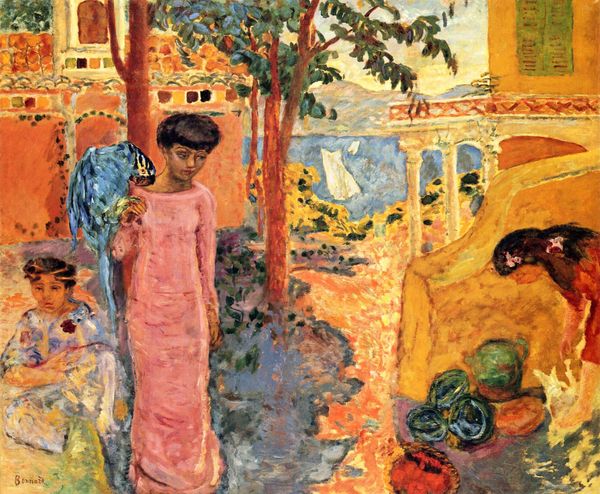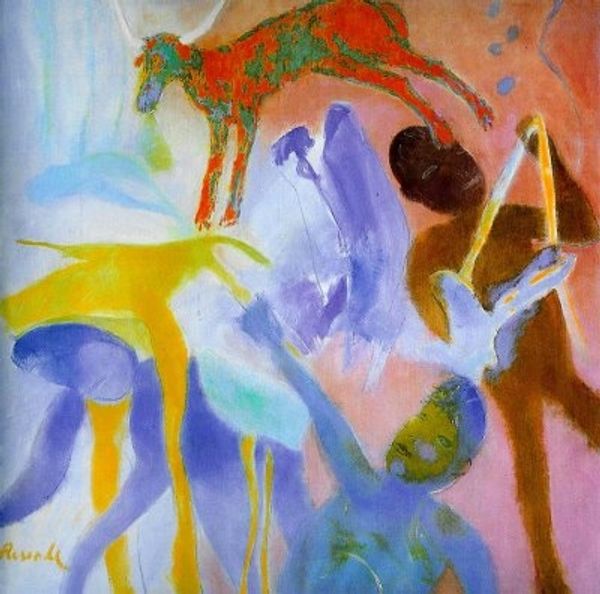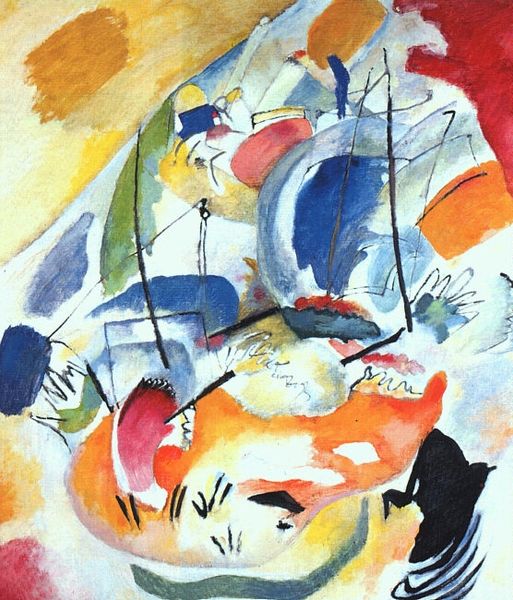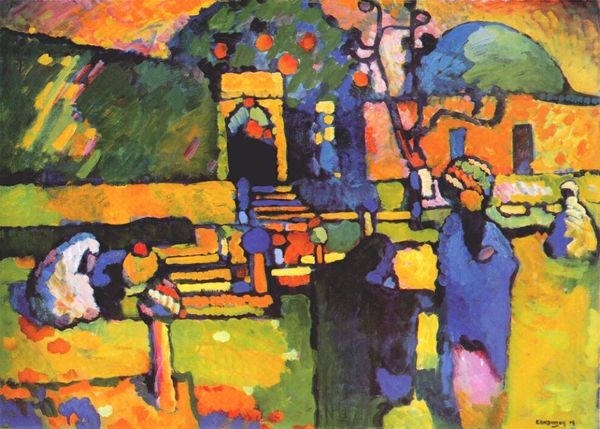
Dimensions: 129.5 x 230.5 cm
Copyright: Public domain
Curator: Welcome. We're standing before August Macke's "Big Zoo, Triptych," completed in 1913. It resides here, in the Museum Ostwall. Editor: It's... vibrant. A kaleidoscope. The composition throws the eye about quite playfully. Curator: Macke, along with other Expressionists and Fauvist artists, captured modern life in vivid color. Think about what a zoo meant in early 20th century Europe. Editor: Indeed, there’s an artifice immediately apparent. The bold oranges and blues, the seemingly haphazard brushstrokes—they create a reality that’s distinctly mediated. It is like the memory of a zoo visit rather than a photorealistic image. The palette seems emotionally driven more than representational. Curator: Precisely. These places of leisure became spectacles. The rise of the urban middle class influenced art in all kinds of ways; we start seeing leisure depicted as a pastime more often. Editor: The perspective is deliberately skewed. See how the planes almost fold into each other? Is it meant to convey an inherent tension, perhaps the cage versus natural habitat? Look at how light reflects off forms regardless of if its appropriate to a scene that is allegedly outdoors. Curator: That is an interesting read on those shapes and contrasts; remember that as this art period and expression of new German art exploded, there was much conflict in European societies about the definition of nature in the new industrialized age, including cultural norms on modern spectacle. It seems a zoo with new painting qualities offered it well. Editor: But does this 'Zoo' really want the animals freed? Maybe Macke thought, the unnatural juxtaposition can co-exist aesthetically through abstraction and pure chromatics. It offers something, yes? Curator: Something certainly was offered through a modern aesthetic, by placing everyday themes alongside society's understanding of what should be. Editor: A captivating slice of life rendered through a highly personal vision. It holds much to reflect. Curator: And remember Macke died soon after this was made in World War One, what an epitaph for the cultural milieu that was to change quickly and dramatically.
Comments
No comments
Be the first to comment and join the conversation on the ultimate creative platform.

